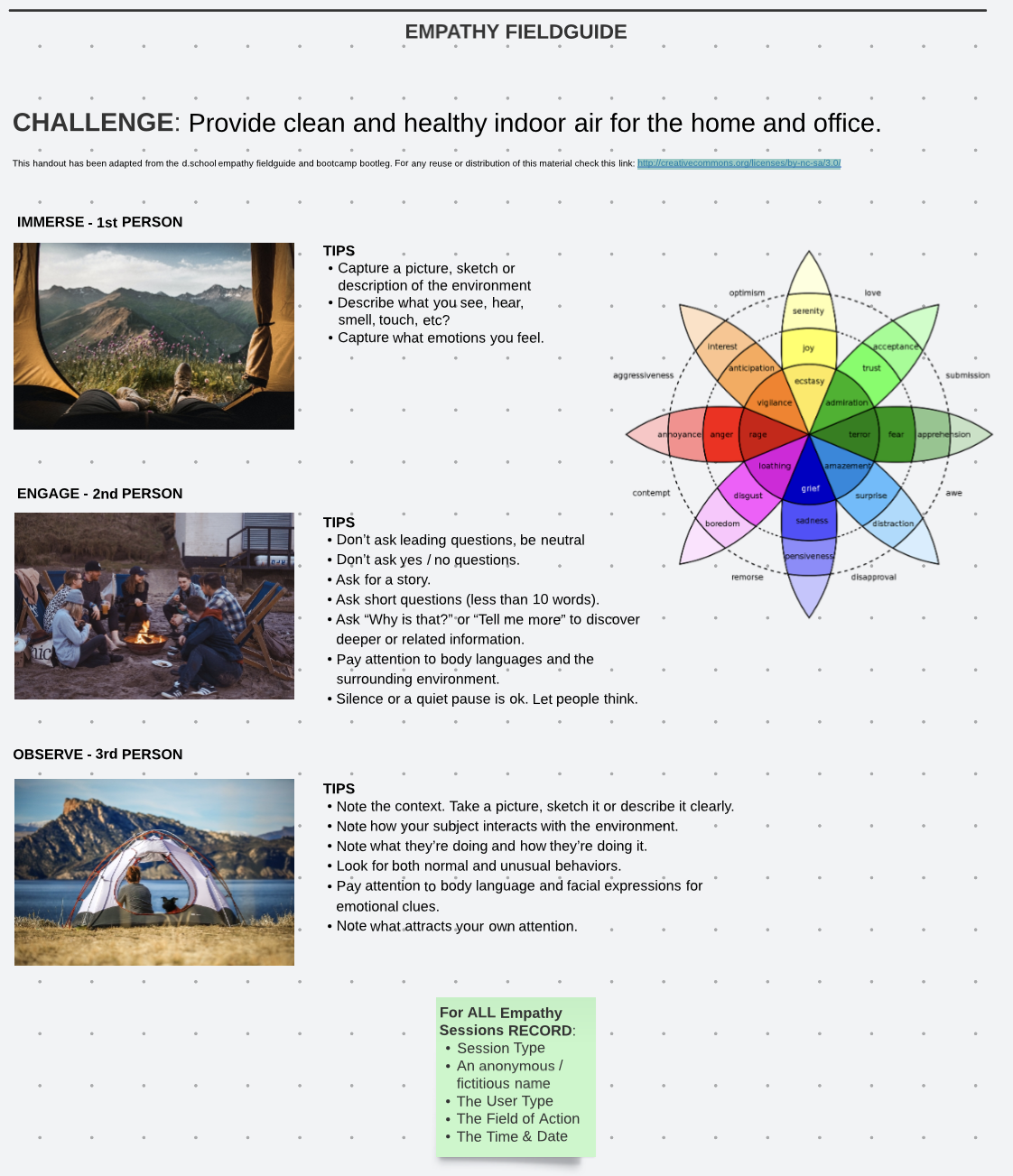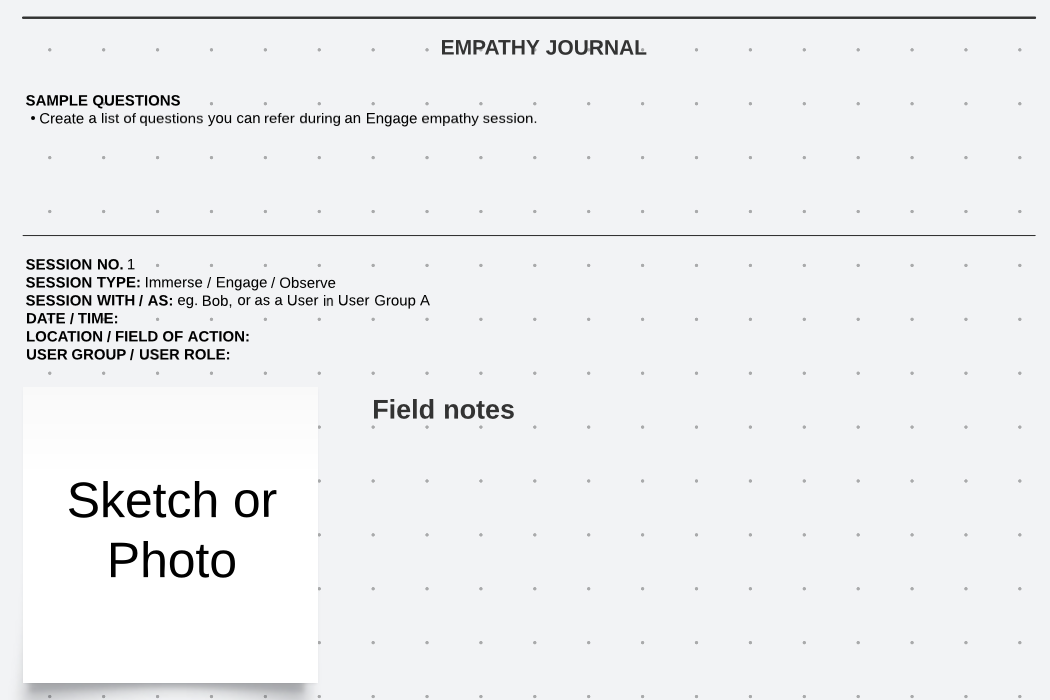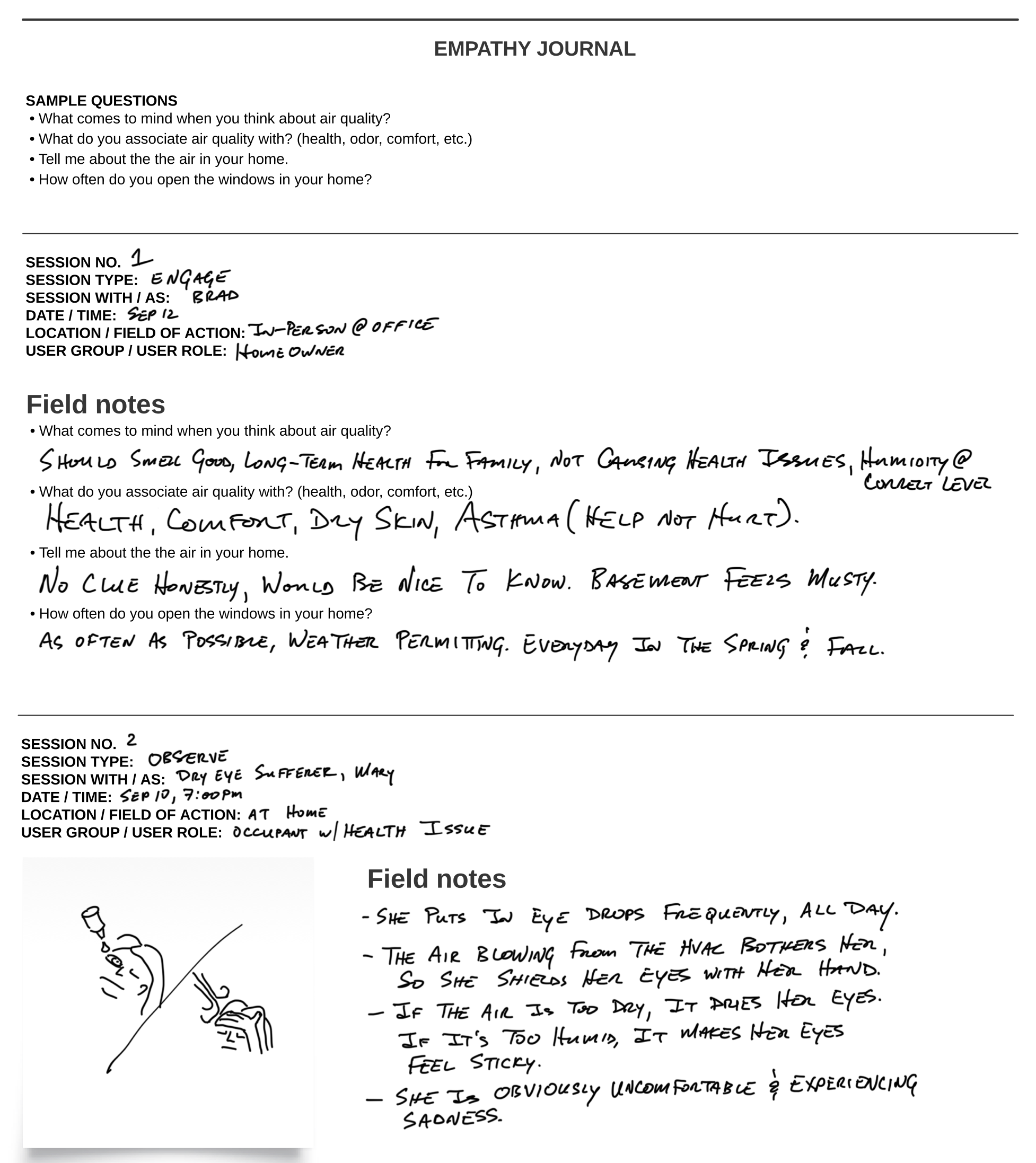We Don’t Know Jack…
BACKGROUND ON EMPATHY
When it comes to innovation, balancing what you know with what you think you know is a tricky thing. Hold loosely to what you think you know, else you may put a strangle-hold on innovation-inspiring insights. After all, innovation often occurs in the discovery of new knowledge, not the rehashing of existing. So how do we get to those new and inspirational insights? Empathy.
The ability to empathize with others is a core skill in Systems Design Thinking. If you’re familiar with the design thinking process then you already know what we’re talking about. If you’re new to this whole thing, we will briefly define empathy with respect to this method. It’s not to be confused with sympathy.
Empathy - the ability to understand someone else’s emotions. This does not require agreement with their emotions - only the ability to see where they’re coming from.
Sympathy - sharing or feeling the same emotion as someone else. This implies agreement since you feel the same as they do.
These concepts sometimes overlap: empathy can lead to sympathy and vice versa. The reason we empathize in Systems Design Thinking is so we can truly understand the emotions experienced by the folks we aim to help without taking on their emotions. Empathy puts us in a place to help since we’re not clouded by taking on others’ emotions. Empathizing also allows us to understand different perspectives from our own, reducing the biases we naturally have. This can be particularly evident if you’re addressing a challenge that crosses cultural barriers. For this reason, the Empathize phase is sometimes referred to as ethnography. In summary, empathizing allows us a better understanding of others. If we understand others better we can more easily identify innovative services and products to their challenges.
THE 3 MODES OF EMPATHY RESEARCH
There are three means to conduct empathy research:
1st Person (Immerse)
2nd Person (Engage)
3rd Person (Observe)
Before we discuss the first empathy type, Immerse, we must first introduce the Empathy Fieldguide. There are many versions and variations floating around. We prefer to use something similar to the one from the d.school at Stanford. The Fieldguide is especially helpful when you’re new to empathy research. It reminds you of how to conduct an empathy session, in what ways to ask questions, what to look for, what to record, etc. An indispensable part of the Fieldguide is Plutchik’s Wheel of Emotions. This gives us the vocabulary to aid in describing emotions consistently. We like to tailor a Fieldguide to our specific challenge, print it out (or create a pdf) and then use it during our empathy sessions.
Now on to the first empathy type: Immerse. Immersion is a 1st person experience. If your design Challenge is one that you are a potential user of the solution this can be your exact experience. If not, you can pretend to be someone in one of your User Groups.
Immerse Empathy Type
The key to a good Immersion session is to record how YOU FEEL (refer to Plutchik’s Wheel as necessary). Describe your environment, sounds, smells, etc. Take a photo or sketch it out. Anything that captures the emotions you feel in the specific event or situation you are studying. This doesn’t have to be elaborate or time consuming. Just record how you feel. Also, it’s ok to not have any epiphanies - those come later in the Define phase 😀.
Let’s now look at the next empathy type: Engage. Engaging with someone is a second person activity and is similar to a customer interview. An Engage empathy session is considerably different from conducting a customer survey, however. Survey questions are typically constructed to get pointed feedback on specific features or aspects of a product or service. During an Engage session, the focus is on the discovery of someone else’s perspective, not validating our own. With that in mind, you want the person you’re engaging with to do the majority of the talking once you’ve set the stage. Look for moments or comments that pique your curiosity and follow them by asking “Why is that?” or “Tell me more about that.” Getting folks to share stories is often the best way to discover the emotions behind their words rather than directly asking them how it made them feel.
Engage Empathy Type
Here are some tips to help your Engagement sessions go as smoothly as possible:
Don’t ask leading questions, be neutral.
Don’t ask yes / no questions.
Ask for a story.
Ask short questions (less than 10 words).
Ask “Why is that?” or “Tell me more” to discover deeper or related information.
Pay attention to body languages and the surrounding environment.
Silence or a quiet pause is ok. Let people think.
Last thing on Engagement sessions, which can be scheduled or spontaneous. In either event, if you’re conducting empathy with a team, don’t approach someone with more than two from your group. Being approached by several people at once can be intimidating. Be careful about approaching folks, especially moms / dads with young kids. They will already be on stranger danger alert. Be courteous and state your intentions clearly, such as: “Hi, my name is <your name>. I’m with <your company / school>. I’m conducting research on <your challenge statement>. Is it ok to ask you a couple of questions?” You don’t need to ask for their name. All empathy sessions should be kept anonymous, even if you know the person. If you’d like to take a picture of someone to capture the moment, ask for their permission. These are common sense things but you’d be surprised at how easily they’re forgotten.
The last empathy type is Observe. You can probably guess this is a third person activity. Your notes will resemble making observations for a science experiment, only with a focus on emotions - which are inherently more difficult to observe. In an Observation session, context is very important. Behavior in context can help you understand driving emotions. For example, you see someone sprinting as fast as they can. If that person is on a racetrack in a group of runners, it’s likely they’re filled with the thrill of competition and perhaps optimistic for a win. If, instead, the person is being chased by an angry, aggressive dog, it’s safe to say they’re feeling intense fear. Your user group may have multiple contexts, too. Try to observe them all. For example, if you’re observing people in an office setting, observe them working at their desk, attending a meeting, going to lunch, etc. The same individual can provide different insights across multiple contexts.
Observe Empathy Type
Some tips for Observation events:
Note the context. Take a picture, sketch it or describe it clearly.
Note how your subject interacts with the environment.
Note what they’re doing and how they’re doing it.
Look for both normal and unusual behaviors.
Pay attention to body language and facial expressions for emotional clues.
Note what attracts your own attention.
EMPATHY RESEARCH IN EXAMPLE
Let’s now look at some empathy sessions within a commercially available tool. We previously wrote about software tools in Systems Design Thinking and how they can better help you apply the methods. Check out that article for our full explanation. For empathy sessions, we recommend using either:
Print outs / pdfs and hand notes
A web-based collaborative “whiteboard”
I personally use print outs and pdfs most frequently, but if your “whiteboard” tool doesn’t slow you down in the field, then go for it. It will be an added bonus to have your empathy sessions documented in the same location that you will unpack them during the Define phase of the method.
Figure 1 shows a template fieldguide. Note that there are examples of each empathy type to refer to along with tips for conducting the empathy session and Plutchik’s wheel of emotions. There is also a reminder to record an ANONYMOUS name for each empathy session. Do not use real names for empathy work. Later, during the Define phase, you will use your own empathic understanding to infer the emotions experienced by the empathy subject. This inference inherently contains our own biases and therefore should not be directly associated with the empathy subject.
Figure 1 - Empathy Fieldguide Template
Although you may consider it to be the same document, we’ve separated out an Empathy Journal template, as shown in Figure 2.
Figure 2 - Empathy Journal Template
The journal section is where you record the details of each empathy session. We recommend recording metadata for each session (empathy type, date / time, location, user group, etc.). These data will help later, during the Define phase, as you unpack each session to extract insights. Note there is also a space to delineate sample questions that you perhaps want to highlight during an Engage session, along with space to attach a sketch / photo and, of course, space for your notes.
As I mentioned above, I typically take notes by hand. Figure 3 displays the Empathy Journal Template of Figure 2 exported as a pdf with hand notes recorded on an iPad. Figure 3 shows an example of both an Engage session and an Observe session.
Figure 3 - Empathy Journal Example
Again, if you can take notes directly in the virtual whiteboard without connectivity issues, that is totally fine. If you go that route I would recommend having a pdf as backup or a physical print out. The last thing you want is to run into technical issues as you’re trying to capture insights from your empathy subjects.
That wraps up the Empathize portion of Systems Design Thinking! You’re now equipped to conduct your own empathy research. In our next blog, we’ll cover the Define phase. In the Define phase you’ll unearth insights from your empathy sessions, enabling a true understanding of your challenge. This sets the stage for innovations that solve a well-defined problem and not just your own take on a problem.
If you’re itching to get going on your own project and can’t wait for our next blog, please reach out! We’re happy to help you get going as quickly as possible.






